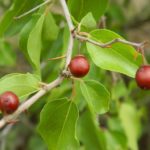English names: Marita or ‘Red Fruit’
Tok pisin name: Marita
Bahasa Indonesia name: Buah Merah
Scientific name: Pandanus conoideus Lamarck
The marita pandanus plant

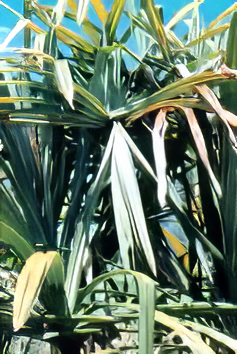

A short much branched screw pine with many prop roots. The prop roots have prickles. Trees may have up to 8 or 10 main branches. Trees grow up to about 5 metres tall. There are many short sharp spikes on the trunk and branches.
The leaves are between 1 and 2 metres long and about 10cm wide. The leaves grow opposite each other but are twisted to look like a spiral. There are thorns along the edges of the leaf. It produces a large (1 m long) dark red to yellow fruit with a hard rough/spiky surface. The fruit is hard and has small lumps or spikes over the surface. The fruit grows at the ends of the branches between the leaves, and it has 3 straight leaf-like bracts along the edges.
Where is Marita grown?
It grows throughout PNG from sea level up to 1650 m altitude and becomes common above 500 m. And occurs also in Maluku in Indonesia.
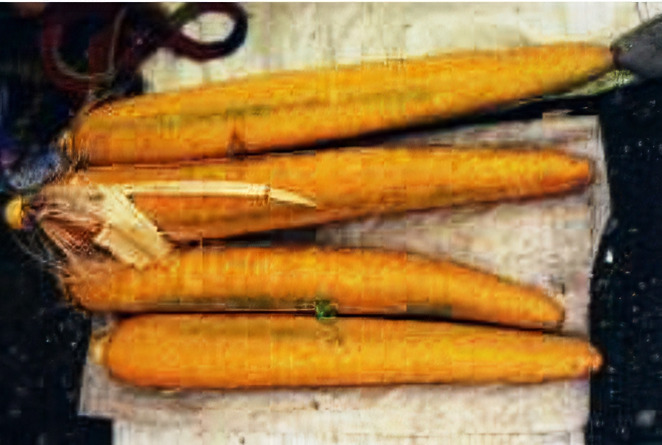
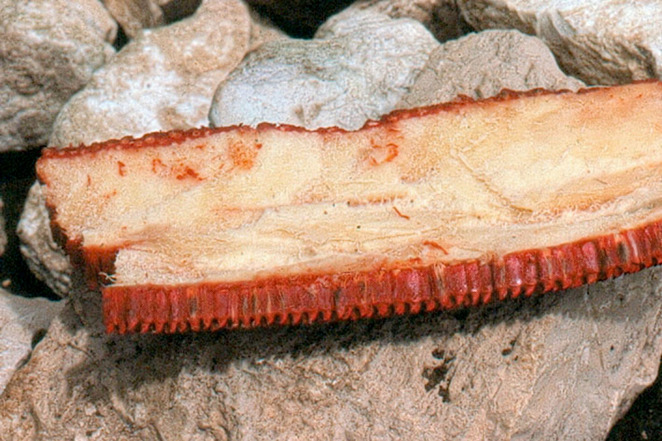
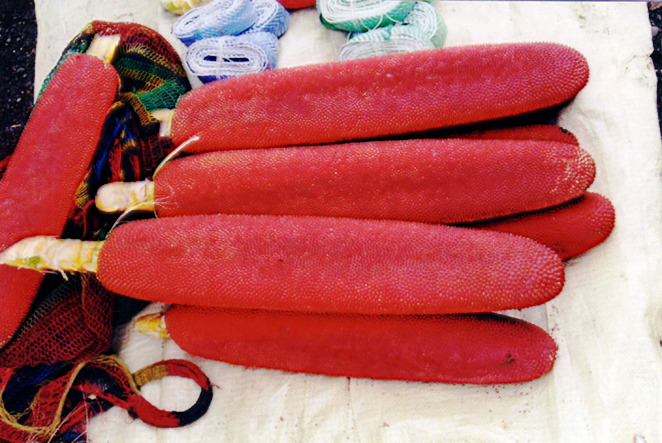
In PNG, people often plant marita along the roads and walking tracks. It is also planted in most gardens and serves as a reminder that the land is owned by the person who planted the marita. So, often marita plants belonging to one person are scattered in lots of different places.
How do you plant marita?
Marita pandanus is normally planted from suckers or cuttings. The cuttings used the ends of branches. Suckers produce more quickly. A new shoot normally sprouts out of the branch just below where the end was cut off. The cutting will soon develop roots and become established when it is planted.
A more popular method is to use a sucker or shoot growing from the plant down near the ground. The sucker is separated from the parent plant and then replanted in its new place. These suckers grow more quickly and can bear fruit after 18 months to 2 years. Cutting off a branch may take up to 4 or 5 years before it produces a fruit.
When is the marita season?
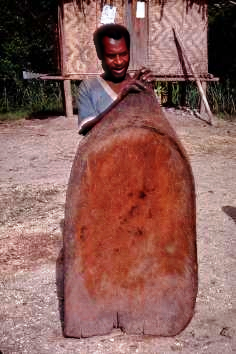


A marita fruit is harvested when the colour starts to change to a brighter red or yellow. Sometimes it also starts to crack slightly at this stage. The fruit is cut from the branch. Marita is a seasonal crop, but the fruiting season is not a short-marked one. The main season goes from about October to March, but individual trees can bear almost throughout the year. Near the sea the marita season is longer and more spread out but as the places increase in altitude above sea level the season becomes more distinct. The Marita season is an important occasion. During the season people often use marita twice a day.
How is Marita used?
A ripe marita fruit is normally split into 3 sections along its length. Traditionally this was often done with a knife made from the sharpened leg bone of a cassowary.

Then the central yellow stalk and pith area are dug out. The outside hard red layer is then cooked. Preferably it is cooked using hot stones although sometimes it is boiled in a saucepan. After cooking for about half an hour the hard pits are squeezed from the soft red juice by squeezing through the hands. Water is added to make an oily red soup.
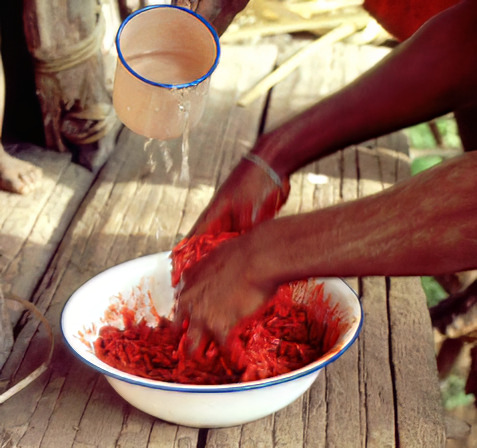
The soup is then eaten. Sometimes it is eaten by dipping green leaves or sago into the soup. At other times it is eaten with a spoon made from the marita leaf. Some people just suck the cooked juice from the seeds. Also, some people use the oily juice to cook food in. The pits or seeds are thrown away, normally to pigs. A harvested marita fruit will only be kept for about one week. After cooking it will only last for about 12 hours.
Diseases, insects, and other pests
Diseases:
Some diseases can fairly often be seen on the leaves of Marita pandanus. Two fungi are common. One causes a black leaf mould that grows in a line along the leaf. The other one causes a brown dead spot that has a yellow ring around it.

In Marita areas fruit which still aren’t ripe sometimes stink and are going soft and squashy. They are mostly just cut off the tree and left to rot. The cause is not known. It is probably a bacterial disease.
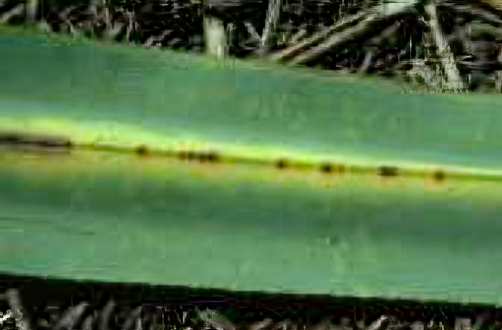
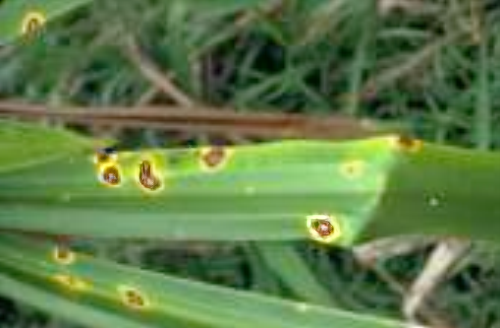
Insects:

Pests:
In some areas, tree kangaroos can do serious damage to fruiting marita.
The food value of marita.
The following information is an extract of this page on Wikipedia: ‘… Buah Merah (Bahasa Indonesia name for Marita) is a good source of Vitamin A with 130 μg of alfa-carotene, 1980 μg beta-carotene, and 1460 μg beta-Cryptoxanthin. As well as a good source of natural Vitamin E …’ Additional statements on nutrients and phytochemicals can also be found under this link.
________________________________________________________________________________________________________________
Text and all photos at this article © Food Plant Solutions. The professional background and contact information of the author of this article can be found here.
.


